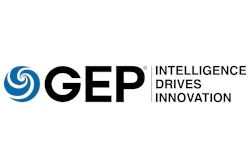
Procurement organizations that operate successful supplier diversity programs are always planning ahead and looking for ways to improve their diversity portfolios.
Trends in recent years show that supplier diversity is a business imperative for all Fortune 500 companies. These companies jump through hoops to find eager, yet qualified diverse suppliers who can contribute to the corporate bottom line. They also look toward the future by working with diverse suppliers to develop their businesses, ensuring a strong pipeline of diversity business partners.
Here are four steps category managers or sourcing managers can take to meet or exceed their diversity goals for 2017:
1. Keep Diversity Certificates Current for All Suppliers
A common mistake made by category managers is failing to track certificate expiration of their diverse supplier portfolio. It’s essential to create a list of all old and new diversity suppliers with the following information:
- Supplier name.
- Expected spend.
- Expiration date.
Using this tracker, you can identify suppliers whose certificates are expiring for the current year. All relevant suppliers should be notified three to six months in advance. The process of requalifying a supplier after its certificate is expired is a lot more tedious than renewing an existing certificate. Monthly reviews of spend and the tracker help in meeting your diversity goals, as well as minimizing the risk of losing diversity spend.
2. Make Diversity Part of the Supplier Qualification Process
Diversity certification should be used as a qualification in the request for proposal (RFP) process or any other sourcing event for shortlisting suppliers. Though diversity might not be the key deciding factor of the RFP, it helps build a supplier database of qualified diversity suppliers for future reference. It also improves chances of diversity suppliers participating in every sourcing event. Historically, such requirements also improved awareness amongst qualified diversity suppliers in becoming certified to improve their chances of getting business.
3. Target Diversity Suppliers across All Categories
Another common mistake made by diversity professionals is a lack of awareness about the various categories of diverse companies. A lot of procurement professionals focus only on minority-owned and women-owned businesses. As a result, they miss out on lesbian, gay, bisexual and transgender- (LGBT-) or veteran-owned business that can help improve the spread across all categories. Diversity organizations—such as the National Veteran Business Development Council (NVBDC), National Minority Supplier Development Council (NMSDC), Women’s Business Enterprise National Council (WBENC) or the National Gay and Lesbian Chamber of Commerce (NGLCC), etc.—can be great repositories of potential suppliers. In fact, these organizations are often a great source of information regarding the certification process. Attending national and regional events of these organizations helps build a strong network.
4. Report Tier 2 Spend Effectively
Procurement professionals are always seeking out diverse suppliers, but typically ignore spend they’re passing through their direct suppliers. Some companies have goals for Tier 2 spend, in which case it’s imperative to manage how your suppliers spend their money.
When your incumbent suppliers (both diverse and non-diverse suppliers) use diverse suppliers, you can report that spend as Tier 2 diversity spend. Category managers should always include a Tier 2 diversity spend clause as a part of every contract and hold their suppliers accountable for reporting it on monthly basis.
With 12 years of experience, Sachin Yadav is a seasoned procurement and supply chain management professional delivering sustainable cost savings and process improvements across categories. As a part of GEP’s strategic sourcing and category management team, Yadav is responsible for leading strategic sourcing initiatives across myriad categories for clients in the manufacturing sector. He has extensive experience in end-to-end category management, including supplier and contract management, tail spend management, compliance and reporting.



















